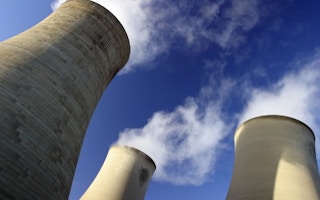Japan’s nuclear crisis, and the approaching 25th anniversary of the nuclear meltdown at Chernobyl, have incited heated new discussions about the desirability of nuclear power. By awakening dormant fears, this debate threatens to halt what to many had seemed like a budding nuclear renaissance.
The stealth-like nature of radiation taps into deep-seated human anxieties. But, however well founded those fears might be, they are probably the wrong reason to oppose nuclear energy. There is an even stronger argument than safety alone for why a nuclear renaissance is neither likely nor necessary: cost.
The price of nuclear power has been escalating steadily for decades. Since 1970, the cost in constant dollars of new nuclear generating capacity has increased nine-fold, as additional safety features make plant designs more expensive. New innovations, such as pebble-bed reactors, promise to increase safety further, but will be vastly more costly to adopt.
In addition, we have lost economies of scale because we build so few nuclear power plants. As with fighter jets, adding features and building small quantities causes costs to skyrocket. Globally, the median age of nuclear plants is now 27 years, so much of the learning from building the early plants has gone.
The exception is China, where a large-scale construction plan is showing evidence of lowering costs. But with the next generation of safer reactors, costs are rising fast. Xu Yuanhui of Chinergy, which is building two pebble-bed reactors, commented recently on the new design: “The safety is no question, but the economics are not so clear.”
The exact opposite is occurring with renewables. We are learning quickly, and costs are plummeting through the sheer volume of construction: 40,000 wind turbines over the past decade in Europe alone. And solar power will reach grid parity in sunny regions like South Africa, Greece, and Florida by 2015.
As the price of nuclear power steadily rises and that of renewables falls, inevitably the cost curves will cross. The only question is when – and it is likely to occur well within the decade that it will take for the next nuclear plant to come online in the industrialized world. In other words, before we finish building the next nuclear plant, it will be an expensive and increasingly irrelevant relic of the 1950’s dream of “atoms for peace.”
That dream always contained the seeds of a nightmare. While the risk that nuclear power could fuel nuclear proliferation seems to have receded as a cause of public angst, by many accounts we have simply been lucky so far: the larger the nuclear economy becomes, the higher the chances of a mistake. Even in the absence of proliferation risks, leaving dangerous trash for future generations is morally dubious. We would judge Alexander the Great differently if his conquests had left a toxic legacy that we were still living with today.
Most advocates of nuclear energy now endorse solar and wind, but in the same breath claim that renewables alone simply are not a practicable solution for the necessary reduction of carbon emissions. Every day brings another editorial arguing that nuclear energy is fundamental to a decarbonized power system. But is it really true that a renewable power system is impossible?
In 2010, the European Climate Foundation (ECF) published a much-noted report called Roadmap 2050, which modeled in great detail the cost and technical feasibility of various scenarios for a carbon-free power system in Europe by 2050. It describes a scenario of 80% renewable power, complemented by a remnant of nuclear and fossil fuels with carbon capture and sequestration.
In a nutshell, the ECF’s conclusion is that a continent-wide renewable power system is both technically possible and economically affordable. The much-maligned and very real intermittency of supplies of renewable power is addressed through additional back-up generation capacity and, crucially, a new direct-current supergrid that enables load balancing across the European continent. Still, if it is affordable and doable in the long term, what about in the shorter term?
The evidence of the link between carbon reduction, economic growth, and job creation is mounting. In the past six months, studies by the United Nations Environment Program and Johns Hopkins University, as well as “A new growth path for Europe,” a blueprint proposed by six leading European universities, all project the creation of millions of job before 2020. Notably, these are not just “Green Jobs”; they are “Green Growth jobs” across all industrial and services sectors.
What we are witnessing is a watershed in the debate on greenhouse-gas emissions. A low-carbon growth path requires neither coal nor new nuclear power. The way forward is to pursue more ambitious and consistent climate and energy policies that drive the massive deployment of renewables; install new load-balancing electricity grids; and ensure large-scale adoption of energy-efficiency measures.
This agenda promises to boost investments, stimulate economic growth, and create jobs while increasing competitiveness and energy security. In both economic and ethical terms, nuclear power merits no role.
Roland Kupers is a visiting Fellow at Oxford University and a former executive at Royal Dutch Shell.
Copyright: Project Syndicate, 2011.











